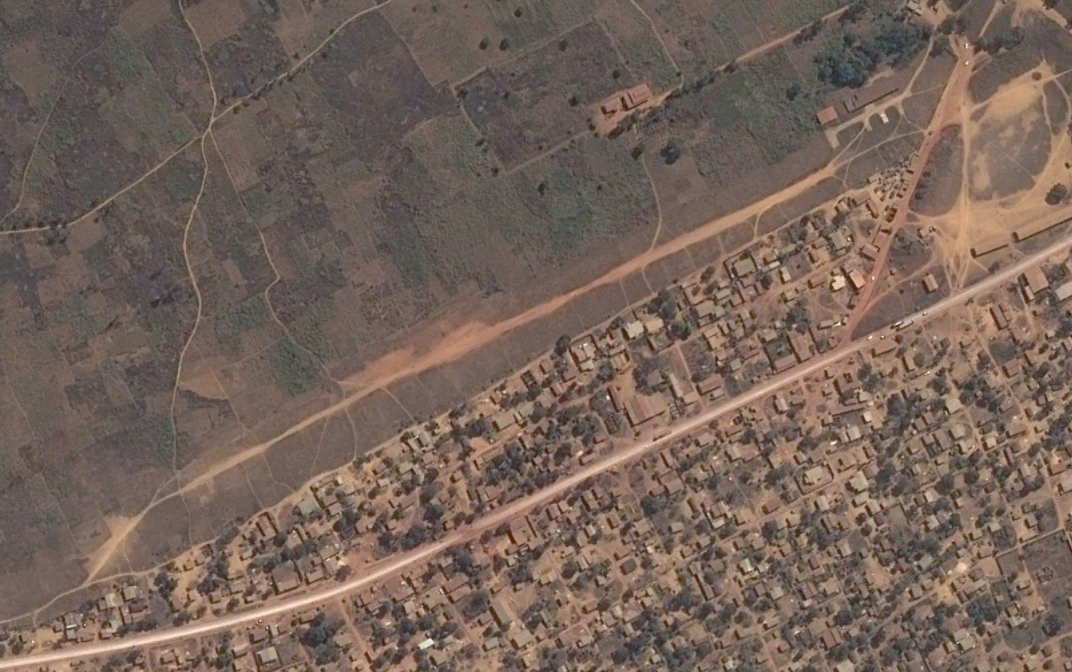Kimpese Airport
Location: Kimpese, Kongo Central
Status: Abandoned
ICAO Code: none
IATA Code: none
Coordinates: -5.558347°, 14.458567°
Kimpese is a town situated along National Road 1 and the Matadi-Kinshasa railway, serving as a regional hub with historical ties to missionary and agricultural activities. A catholic mission was established in Kimpese in 1901, and seven years later, in 1908, the town’s hospital was founded.
Due to its strategic location along the railway, Kimpese experienced steady growth, attracting several Christian missions that managed the hospital along with other social and economic initiatives. However, as late as 1980, Kimpese was still referred to as a large village, indicating that its development remained moderate despite its favorable position.
Today, archival sources suggest that Kimpese continues to be economically active, with a focus on agriculture and local trade.
Historical Background
The origins of Kimpese Airport remain unclear. It is first depicted on the 1996 U.S. Tactical Pilotage Chart. Furthermore, Kimpese is listed in the 2015 MAF Airports Directory, which provides exact coordinates and names CEC as the operator. CEC most likely refers to the Communauté Évangélique du Congo, which aligns with the town’s strong missionary presence.
The MAF listing also warns of obstacles at the site, including a Vodacom tower at the eastern end of the runway and a TV antenna at the western end. This indicates that MAF aircraft operated at Kimpese in relatively recent years.
Satellite imagery from 2013 clearly shows Kimpese’s dirt runway, but its irregular width and general appearance already suggest that maintenance was minimal. Over the following years, progressive deterioration is evident in later imagery, marking the airfield’s gradual decline.

Current Status (as of 2025)
The most recent available satellite imagery of Kimpese Airport, from 2022, confirms that the airfield is completely abandoned. While the property remains undeveloped, with no signs of housing encroachment, the land is now used for agriculture, featuring small crop fields and scattered farming plots.
